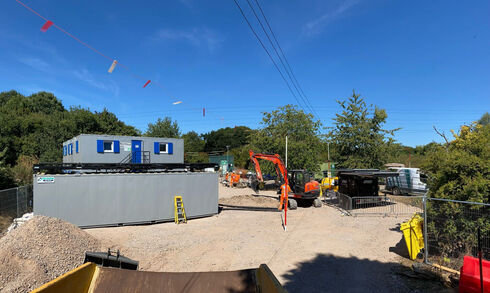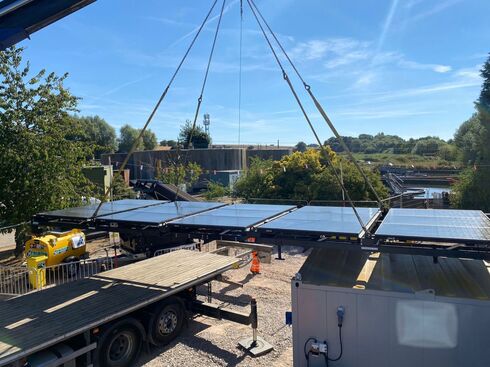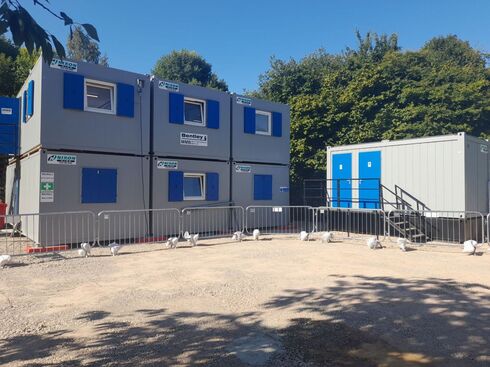
Nixon solar site aims for zero emissions
15 August 2022

Early results from a new Nixon Hire site setup suggest that all the electricity needed to power the welfare facilities, site offices and other essential services for the project might be obtained solely from the sun.
The hirer has installed solar harvesting equipment at a two-year Thames Water pumping station project in Berkhamsted. Nick Hibbard, Nixon Hire’s UK divisional manager for renewables tells me that immediately the site was commissioned, all the required electricity was being provided by the solar panels.
Admittedly it’s the height of summer and Britain has been in the middle of a heatwave, but Nick is monitoring the data that is constantly fed from the project to see if such an installation could perform similarly in the winter months, with surplus energy from the solar panels being stored in a battery pack for later use.
“We can monitor remotely and in real time the power being generated and consumed. In fact, we purposely left on a heavy load during the first night to mimic a winter setup to see if we could discharge the battery and make the backup generator start. But it didn’t,” says Nick.
The installation, which only opened last week, is very similar to the setup demonstrated on Nixon’s stand at Scotplant in April, as reported earlier on the blog.
The company also did a real-life dress rehearsal of the Berkhamsted configuration at its depot nearby in Bedford to test it.
The facilities at the site include six 32ft welfare units, two offices, a meeting room, two canteens and a drying room, along with a toilet block and a 32ft storage unit with power and lighting. To reduce energy usage, LED lights are fitted throughout instead of fluorescent tubes, as well as 1kW oil-filled heaters rather than radiant ones.
At the heart of the project are 15 solar panels mounted on the roof of the storage unit. They are housed in a frame that can be adjusted via a push-button control to adjust the angle at which they meet the sun for the maximum solar gain, depending on the season.
While he spoke to me at about 10am on a sunny morning, Nick could see that the setup was providing 6.7kW, 4kW of which was being fed into the batteries as surplus energy that could be used later. The maximum achievable under the configuration being used is 9kW an hour, but other solar arrays could be added if a project needed more power.
The Berkhamsted installation is utilising Erica (energy reduction through informed control and information) distribution boards, an energy management tool to provide real-time monitoring and data capture. The sockets can be individually timed and remotely controlled for optimum performance.
The idea is that by a certain time, say mid-afternoon, the battery's charge should reach 100 per cent capacity, meaning that it alone could then power the site during the night. It would then be topped up by the panels next day in an ongoing cycle.
Eventually an additional battery pack will be installed to enable charging of electric vehicles and other equipment when they are needed on site.
“The goal is to make this Berkhamsted site totally zero-emission,” says Nick. “Using the Erica board means we can reduce night-time consumption to essential areas like the drying room for heaters and the canteen for fridges, so there will still be enough solar gain available from the battery even during the winter months.
“At the moment, the system is performing exactly as we expected.”



